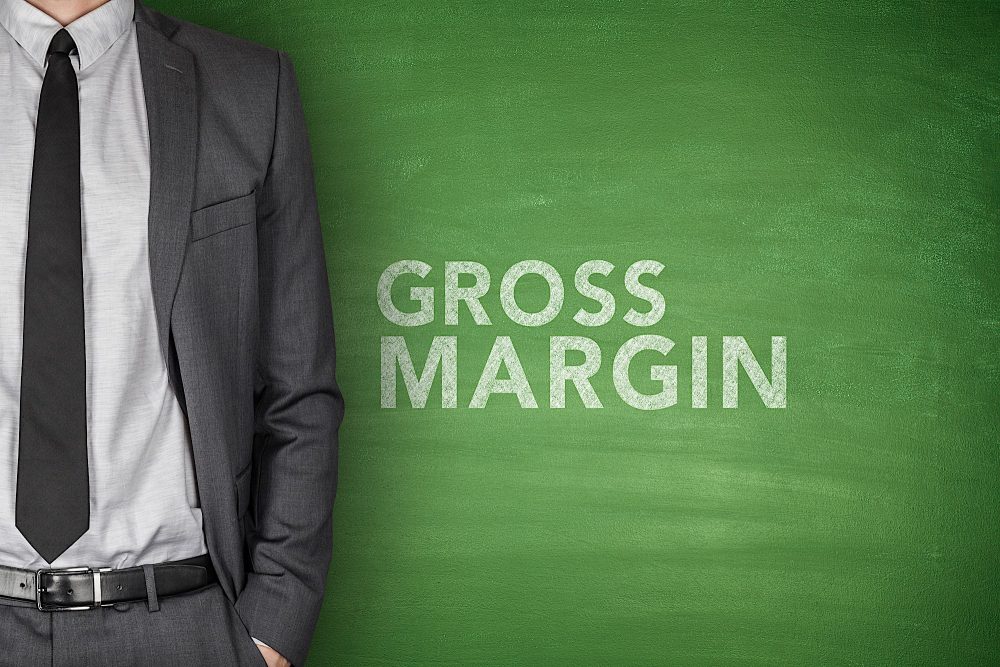As you start to grow your business, you’ll want to learn how to calculate gross profit percentage sooner rather than later. It’s a formula commonly used by business owners, investors, and financial analysts to size up the profitability of a business. It’s also a helpful figure for you to know so that you can compare your business to competitors and track your financial health over time.
In this article, we’ll explore how to calculate gross profit percentage, what the gross profit ratio does and does not tell you about a business, as well as some of the benefits of understanding gross profit percentage. By understanding these helpful formulas, you’ll be one step close to gaining further insight into a company or business’ nature.
What Is Gross Profit Percentage?
A company’s gross profit percentage measures the profitability of its business based on numerous factors. More specifically, it expresses the percentage of the money you’ve made from selling a product or service after accounting for the cost of sales or production.
Generally speaking, business owners want their gross profit percentage to be as high as possible as this represents the amount they can take home after a job well done. It measures how efficiently a company can use its cost of production to produce and sell products profitably.
In simplest terms, the gross profit percentage is a percentage of profit made for every $1 spent to generate or produce goods. The gross profit percentage also measures how efficiently a company can use its cost of production to create and sell products profitably. A high gross profit percentage signals a healthy business, but there are a few other important considerations to remember when looking at a company’s gross profit ratio.
[ Do you have what it takes to run your own real estate business? Register for a FREE webinar, where you can learn from experts how to replicate successful business systems. ]

The Importance of Understanding Gross Profit Percentage
Now that you know what variables go into calculating gross profit margin, you’re probably wondering what it actually means.
As mentioned before, a high gross profit margin is a good indicator that your business is in good financial health. This is valuable information about your business that you, your competitors, and investors can use. Since it’s a simple metric, business owners and investors love to use gross profit percentage to compare one company’s profitability against its competitors quickly.
Your gross profit margin shows just how efficiently you can churn out goods or services, relative to your costs. Expressed as a percentage, it also tells you how much of your earnings you’re able to recover after your costs.
It can also be a powerful tool to help you analyze how to make your business more efficient. For example, let’s say you’ve owned your business for around 5 years. Your gross profit percentage suddenly decreases after the fifth year, or perhaps it remains stagnant when it should have improved. This helps warn you that you potentially have a weak spot in your production, pricing, or sales processes. Then, you can start to investigate and figure out where your inefficiencies are and how to improve them.
What Gross Profit Percentage Doesn’t Tell You
While understanding the gross profit ratio is a useful resource for investors, it’s also important to be aware of some of the shortcomings associated with gross profit percentage. First, it won’t tell you everything. A company’s gross profit percentage is not a reflection of its overall success and financial status. We just mentioned before that this percentage is usual in helping to identify when a company has a weak spot. However, it won’t tell you exactly where that weak spot is, which will require some guesswork. Naturally, it’s never safe to make bold assumptions when making smart business investments.
Second, gross profit percentage doesn’t perfectly indicate the overall profitability of a company. A company, for instance, could have a great gross profit percentage, but an overall weak sales volume that won’t be sufficient to cover expenses that aren’t included in the gross profit ratio formula. Alternatively, a company with a low percentage point could have high profitability if they suddenly increase in popularity or unexpectedly blow up in sales.
Overall, the gross profit percentage is still a great financial tool for getting a snapshot of a company or property’s performance. it’s also important to look at a company’s gross profit percentages over time to evaluate common financial trends and prospective growth down the line. As always, it’s important to understand how the gross profit ratio formula works, and what its variables mean. This way, you can always take your results with a grain of salt. Now that we understand what gross profit percentage tells us, let’s explore how the gross profit ratio formula works, and what its different variables mean exactly.
How to Find Gross Profit Percentage
Before we give you the gross profit percentage formula, there are a few terms you need to know before understanding how to calculate a company’s gross profit ratio properly. By understanding these variables, you’ll better understand what the formula represents and what figures you’re calculating.
-
Cost of Goods Sold: Cost of Goods Sold (often referred to as COGS for short) is a common accounting term you should know. COGS is the total direct cost of making, producing, or selling your product or service. COGS includes direct inputs such as raw materials or labor used to produce these goods.
-
Gross Profit: For those wondering how to find a gross profit percentage, gross profit is what is the leftovers of your profit after you’ve subtracted your cost of goods sold.
-
Revenue: Revenue is all the income that’s been made from selling your good or service. You can calculate your sales revenue by multiplying the quantity of a sold product by the price of your product.
Gross Profit Percentage Formula
Although the gross profit ratio formula itself is simple and easy to calculate, a few steps go into figuring out the variables that go into the formula. By understanding how to find the above variables and what they mean within a business’s operations, gross profit percentage can be accurately calculated. Investors and owners can get the insight they seek about a business’s profitability. This is where knowing the definitions above will come in handy.
Gross Profit Percentage = (Gross Profit / Revenue) x 100%
How To Calculate Gross Profit Percentage In 5 Steps
The gross profit percentage formula is super simple and easy to calculate if you know what you’re looking for within a company’s financial reports. However, you’ll need to prepare by gathering the information needed in the gross profit ratio formula. Here are 5 easy steps you can follow so that you can start calculating your gross profit percentage in no time.
-
Calculate Sales Revenue: Begin by identifying your total sales revenue. Your total sales revenue is a factor used in both the numerator and denominator in the formula. You can find your revenue by finding the line item on your income statement or by multiplying the price of goods sold by their number of sales.
-
Identify All Cost of Goods Sold: After determining revenue, it’s time to add up your COGS. The numerator in the gross profit percentage formula is the gross profit, which you’ll need to calculate using your costs of goods sold. You can find it as a line item on your income statement and it is calculated by adding up all your direct inputs, including labor costs.
-
Calculate Gross Profit: After calculating sales revenue and adding up all business COGS, investors and business owners can calculate your gross profit. To calculate your gross profit, subtract your COGS (found through the step above) from your total sales revenue.
-
Divide Gross Profit with Revenue: Now that you’ve calculated the appropriate variables, we’re ready to apply the gross profit ratio formula. Take the gross profit you’ve calculated and divide it by your total sales revenue.
-
Percentage Conversion: Convert your dollars to a percentage. If you think the result you just got looks odd, that’s because you’re not quite done yet. Gross profit margin is expressed as a percentage, so you must multiply the resulting number by 100% to get the correct result. Now, you’ve learned how to calculate gross profit percentage!

Gross Profit Percentage Example
Now, let’s solidify the information learned thus far by applying it to an example. Let’s say you own a company called Real Estate Rules, LLC. You manufacture and sell rulers and measuring tools specifically for real estate contractors.
The first step is to find out your total sales revenue. You look at your income statement from the most recent fiscal year and note that your revenue was $100,000.
In the next step, you’ll need to add up your cost of goods sold (COGS.) It’s included in your income statement, but you want to use this opportunity to re-calculate it yourself just to be sure. You add up your employee wages, cost of raw materials, and other overhead. As a result, you find that your COGS in the last fiscal year was $50,000.
In step three, calculate your gross profit by subtracting your COGS of $50,000 from your total sales revenue of $100,000. The resulting number is $50,000.
Gross Profit = Sales Revenue – COGS
($100,000 – $50,00) = $50,000
Gross Profit = $50,000
Next, divide your gross profit by your revenue:
Gross profit / revenue = $50,000 / $100,000 = 0.5
Finally, convert your dollars into a percentage by multiplying the resulting number by 100 percent:
Gross Profit Percentage = (Gross Profit / Revenue) x 100%
0.5 x 100% = 50%
In the last fiscal year, Real Estate Rules, LLC had a gross profit percentage of 50 percent. The business owner might first look at their records and see how this number compares to those of years past. Has the gross profit percentage increased or decreased? If it increased, then it’s a good sign that the company’s financial health has improved. If it’s decreased, it’s a great signal that the business owner should investigate if any weak spots should be addressed. It can be quite surprising how informative and powerful such a simple formula can be.
Summary
By understanding what gross profit percentages reflect within a business’s operations as well as how to calculate gross profit ratio, business owners and company investors can quickly compare company profitability. That being said, your endeavor of becoming a more savvy business owner shouldn’t stop at just learning how to calculate gross profit percentage. What’s important is what you’ll do with this information and knowing how to increase your company’s gross profit percentage if needed.
With Fortune Builders’ helpful guide to gross profit percentage, you’ll be one step closer to confidence when analyzing a company’s finances.
Ready to start taking advantage of the current opportunities in the real estate market?
Click the banner below to take a 90-minute online training class and get started learning how to invest in today’s real estate market!


